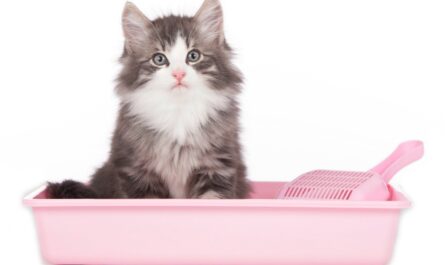The Evolution of Baby Care
Babies have been around for as long as humans have existed, but how we care for our little ones has changed dramatically over time. From cloth diapers that needed frequent washing to modern super-absorbent disposables, diapers have come a long way.
Early Diapering Methods
In ancient times, babies would wear simple wrappings or cloths between their legs that needed to be changed frequently. As cloth became more readily available, diapering methods evolved to include layered cloth diapers that were held on with pins or ties. Most families would have dozens of these durable cloth diapers that needed regular hand-washing. Cloth diapering remained the norm for centuries until advances in materials and manufacturing enabled the modern disposable diaper.
The Invention of the Disposable Diaper
The first commercially available disposable Diaper were introduced in the late 1940s. Created by Procter & Gamble, these “Pampers” diapers consisted of cellulose fluff surrounded by a sheet of waterproof plastic. While a revolution from cloth, these early disposables were still not very absorbent and tended to leak. It would take more innovation to make disposables a truly viable and preferred alternative to cloth diapers.
Advances in Superabsorbent Polymers
A major breakthrough came in the late 1960s with the invention of new superabsorbent polymers (SAPs). SAPs could absorb hundreds of times their weight in liquid, allowing diapers to hold more waste without leakage. This ushered in a new generation of ultra-absorbent disposables that could outperform cloth. Companies also started offering diapers in multiple sizes tailored to a baby’s stage of development. The improved performance and convenience of these modern disposables soon made them the dominant diapering choice for most families.
The Rise of Brand Competition
With Procter & Gamble’s Pampers product firmly established as the top brand, other companies sought to compete and capture market share. Keybrand Huggies diapers launched in 1978 and emphasized an anatomical fit rather than the one-size-fits-all Pampers approach. Other major brands like Luvs, Seventh Generation, and store brands also entered the booming diaper market. This spike in competition drove further leaps in diaper absorbency, comfort, and environmental footprint over the following decades. Today’s top diaper brands spend heavily on product innovation and marketing to appeal to discerning parents.
Diaper Technology Continues to Evolve
While early disposables represented a revolution compared to cloth, today’s premium diapers seem almost nothing like those cardboard-like models of the past. Advanced SAP formulations allow top brands to offer ultra-thin diapers that expand many times their size upon wetting. Some even “wick” moisture away from skin to prevent diaper rash. Elastic waistbands and leg cuffs form a perfect customized fit. Some diapers now contain lotions or fragrances to keep baby’s bottom perfectly soft and smelling fresh. Technologies like “wetness indicators” allow parents to know instantly when a change is needed. All these advances make modern disposables a delight for babies and their weary parents.
The Environmental Impact of Disposables
For all their conveniences however, disposable diapers do create their own environmental issues. Estimates indicate over 27 billion disposable diapers end up in U.S. landfills each year, accounting for around 3.4 million tons of waste. As they slowly breakdown, these diapers can release chemicals and consume oxygen required by other breaking down materials. Some argue that widespread disposable diaper usage contributes to climate change. In response, diaper manufacturers have introduced more eco-friendly designs with less plastic and optimized compositions that decompose somewhat faster in landfills. Nonetheless, environmental advocates continue calling for expanded use of cloth or other sustainable alternatives to help curb disposables’ outsized environmental footprint.
The Future of Diapering
Looking ahead, it seems unlikely that disposables will completely disappear any time soon given their unmatched ease of use tired parents demand. However, market forces and sustainability concerns may drive several changes. “Hybrid” cloth-lined disposables aim to provide benefits of both systems. Biodegradable plant-based materials could replace conventional plastic backsheets. “Diaper services” that deliver and launder reusable cloth options gain popularity. Ultra-thin “air dried” diapers may emerge. Regardless, babies will continue needing diapering solutions. By further balancing convenience and environmental stewardship, future innovations may ensure society sustainably meets their diapering needs for generations to come.
Diapers have come an incredibly long way from simple cloth wrappings to today’s ultra-advanced disposables. Constant innovation, driven by industry competition and parental demands, have made modern diapering methods dramatically more convenient and effective. However, environmental concerns around disposables continuous usage indicates diapering methods may need to further evolve to balance performance and planet-friendliness. The needs of every new generation of babies will undoubtedly continue inspiring such progress.
*Note:
1. Source: Coherent Market Insights, Public sources, Desk research
2. We have leveraged AI tools to mine information and compile it




